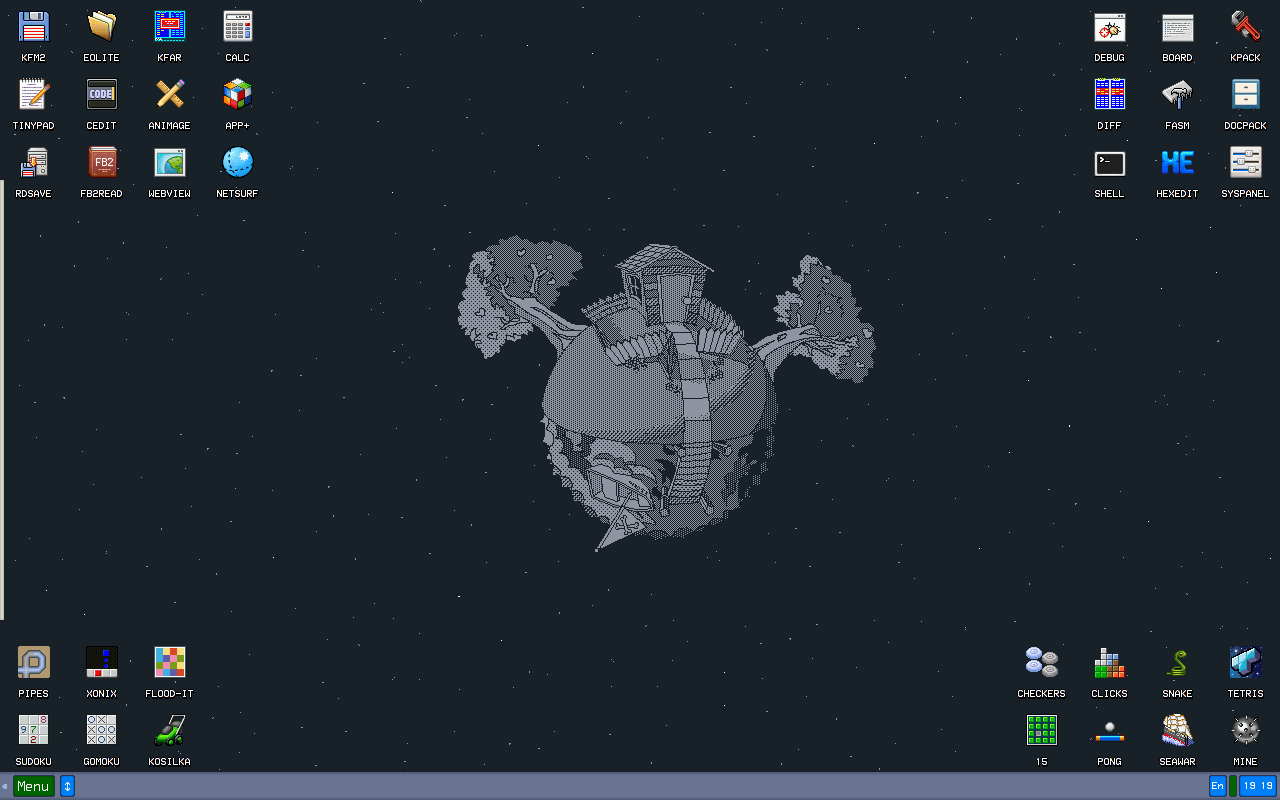KolibriOS is a tiny yet incredibly powerful and fast operating system. This power requires only a few megabyte disk space and 8MB of RAM to run.
KolibriOS features a rich set of applications that include word processor, image viewer, graphical editor, web browser and well over 30 exciting games. Full FAT12/16/32 support is implemented, as well as read-only support for NTFS, exFAT, ISO9660 and Ext2/3/4. Drivers are written for popular sound, network and graphics cards.
Speed is achieved since the core parts of KolibriOS (kernel and drivers) are written entirely in FASM assembly language.
- Features include:A monolithic preemptive kernel that is less than 100 kilobytes in size, complete with streams, parallel execution of system calls, a USB and TCP/IP stack.
- Speed: Thanks to being (carefully) written in Assembler, it’s very fast.
- Size: KolibriOS is very small – The kernel and most of the programs fit on a 1.44MB floppy disk!
- Filesystem support: Read/write support for FAT16/32 (with long file names), ExFAT and ext2/3/4, read-only support for NTFS, XFS and CDFS(ISO9660).
- Lightweight: Kolibri boots on any computer that has a Pentium (i586) compatible processor and at least eight megabytes of RAM.
- Hardware support: A lot of the popular sound, network and graphics cards are supported (see supported hardware list)
- Comes with a development kit (code editor with FASM macro-assembler integrated).

| Working state: | Active |
| Desktop: | KolibriOS |
| Init Software: | - |
| Package Management: | - |
| Release Model: | Fixed |
| Platforms: | i386 |
| Home Page: | kolibrios.org |
| Developer: | KolibriOS Team |
| This article is part of our Big List of Active Linux Distros which is currently under development. |
What's a Linux distribution ("distro")? |
| A distro provides the user with a desktop environment, preloaded applications, and ways to update and maintain the system. Each distro makes different choices, deciding which open source projects to install and provides custom written programs. They can have different philosophies. Some distros are intended for desktop computers, some for servers without a graphical interface, and others for special uses. Because Linux is an open source operating system, combinations of software vary between Linux distros. |
